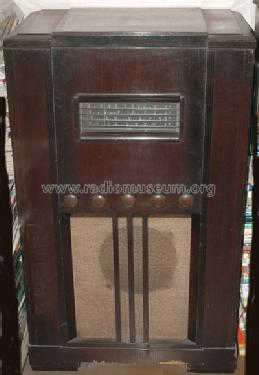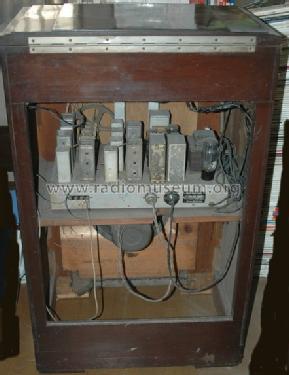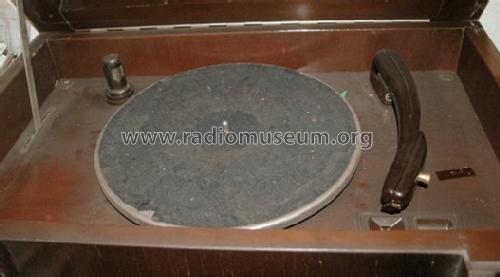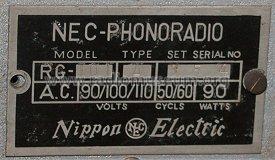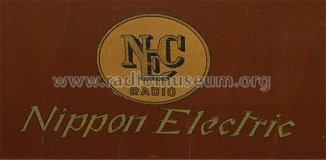- Paese
- Giappone
- Produttore / Marca
- NEC Corporation, Nippon Electric Co. Ltd. (Nippon Denki); Tokyo
- Anno
- 1948
- Categoria
- Radio (o sintonizzatore del dopoguerra WW2)
- Radiomuseum.org ID
- 170409
- Numero di tubi
- 11
- Principio generale
- Supereterodina (in generale); ZF/IF 463 kHz
- Gamme d'onda
- Onde medie (OM) e più di 2 gamme di onde corte (> 2 x OC).
- Particolarità
- Giradischi (non cambiadischi)
- Tensioni di funzionamento
- Alimentazione a corrente alternata (CA) / 100 Volt
- Altoparlante
- AP elettrodinamico (bobina mobile e bobina di eccitazione/di campo) / Ø 10 inch = 25.4 cm
- Potenza d'uscita
- 8 W (qualità ignota)
- Materiali
- Mobile in legno
- Radiomuseum.org
- Modello: RG-101A - NEC Corporation, Nippon
- Forma
- Console di qualsiasi tipo
- Annotazioni
- NEC started radio business after the war. (They manufactured radio in 1920's and faded out.) Model RG-101A was the hi-end model of NEC radios. NEC used pick-ups and phono-motors made by Matsushita. Tubes 6L7G (In Japan called Ut-6L7G) and 76 were used as converter and local oscillator. This was a typical circuit of Japanese all wave radios at this era. The quality of Japanese 6A7 was poor to use for short wave receiving. Radio phonographs were too expensive for ordinary people. A few rich people bought such sets and they are now ultra rare. This model was presented to the royal family in 1948.
- Fonte dei dati
- - - Manufacturers Literature
- Letteratura / Schemi (1)
- Musen to Jikken"(The Radio Experimenter's Magagine) 01/1948
- Autore
- Modello inviato da Tadanobu Okabe. Utilizzare "Proponi modifica" per inviare ulteriori dati.
- Altri modelli
-
In questo link sono elencati 179 modelli, di cui 146 con immagini e 17 con schemi.
Elenco delle radio e altri apparecchi della NEC Corporation, Nippon Electric Co. Ltd. (Nippon Denki); Tokyo
